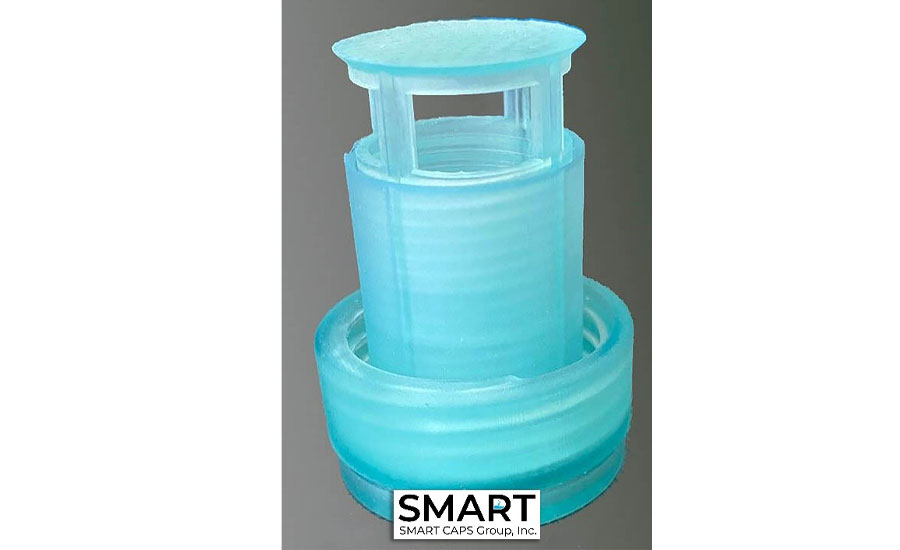Market Insights
Patent-pending gas-trap cap prevents CSDs from going flat
Technology delivers better experience for consumers

Image courtesy of SMART CAPS Group Inc.
Plastic bottles were introduced to the bottling industry and the world in 1978. In the past 44 years, that container and closure technical changes have addressed varying attributes. However, the ability to reduce carbonated beverages’ ability to go “flat” has not been effectively addressed. That is about to change. To help consumers avoid flat soft drinks, a patent-pending gas-trap cap now is available for the carbonated beverage world.
“A check valve, inside a soda cap, what a clever, game changing design ― why didn’t anyone think of this 40 years ago?,” says the head of mechanical engineering of the Southern Alberta Institute of Technology (SAIT).

The Old Way
With a carbonated beverage bottle and traditional plastic lid, the bottle is opened in an upright orientation. The soft drink sits in the bottom of the bottle and the headspace of air and carbon dioxide is between the soft drink and the lid. The pressure in the bottle is in the range of 50 psi at room temperature and the carbon dioxide is in equilibrium between the pop and headspace.
As soon as the lid is opened, the pressurized carbon dioxide in the headspace immediately escapes from the bottle. The pressure in the bottle drops to atmospheric level and the carbon dioxide in solution fizzes out of the soft drink until the lid is put back on the bottle.
No carbon dioxide remains in the headspace and a large amount of carbon dioxide will leave the soft drink and enter the headspace until carbon dioxide equilibrium between headspace and soft drink is reached again. As long as the lid is off the bottle, carbon dioxide will continue to leave the bottle and the soft drink will go flat.
The New Way
With a gas-trap cap, the bottle is opened in an upside down orientation. The headspace is between the soft drink and the “bottom” of the bottle, thus the soft drink is between the headspace and the lid. Once the lid is rotated open, the soft drink flows out, but no carbon dioxide can escape. Any carbon dioxide that fizzes out of the soft drink stays within the bottle.
As the soft drink leaves the bottle, air enters and rises to the headspace. Once the lid is closed, a small amount of carbon dioxide will come out of the soft drink and enter the headspace until equilibrium is again reached. No carbon dioxide has escaped during the pouring process, thus keeping the soft drink carbonated.
When this cap is used properly, consumers will be able to enjoy the entire contents of the bottle with full carbonation, eliminating flat soft drinks.
The company is working with an industry leading closure company to move from the resin prototype to a standard injection molded version of the three-piece cap. The outside dimensions of the new cap are very close to existing cap dimensions. There is approximately 125% more plastic used to mold the three parts. With three separate injection molded plastic pieces, it requires assembly prior to capping at the bottling plant. Additionally, with a large hole in the top of the cap, it will need to be covered, prior to bottling, with a hermetically sealed safety sticker to prevent tampering or dust and debris from settling into the hole.
The key advantage with this new gas-trap cap technology, is giving consumers a better experience.
Looking for a reprint of this article?
From high-res PDFs to custom plaques, order your copy today!





